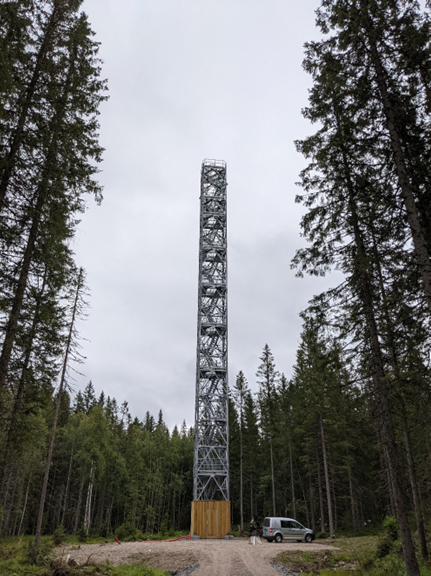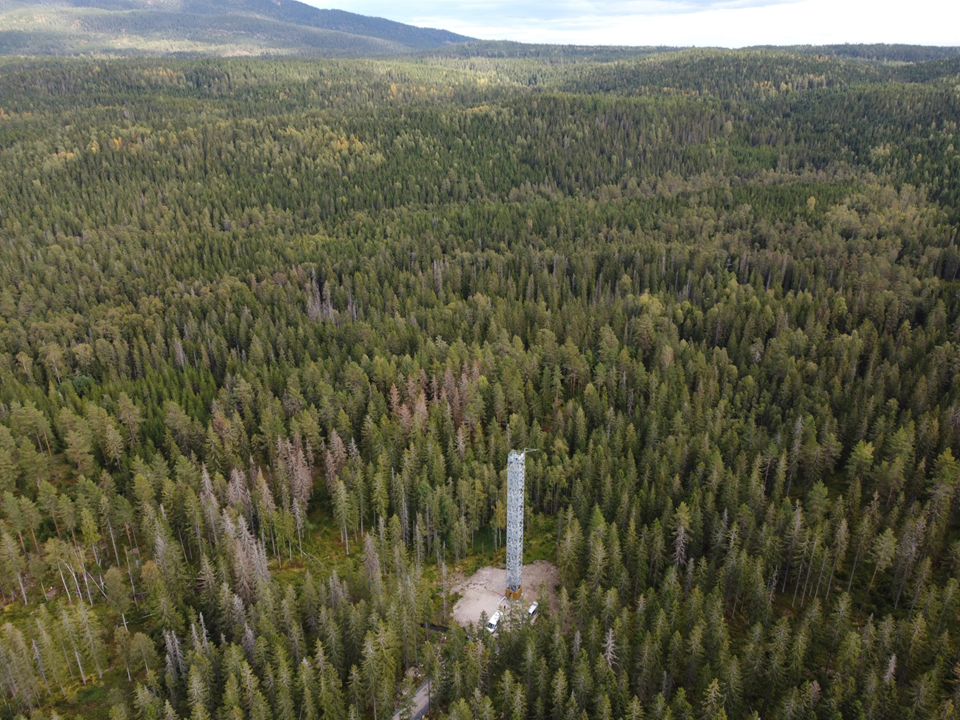
Figure 1: The 42 m high ICOS tower at Hurdal. Photo: Holger Lange, NIBIO.
The terrestrial component of ICOS Norway aims at monitoring the GHG (Greenhouse Gas) balance of key Norwegian land ecosystems and at understanding their response to climate change, variability and extreme events. Up to now, we concentrate our efforts on forest ecosystems, which currently sequester carbon in excess of 25 Mton CO2 per year, which is equivalent to roughly 30% of the anthropogenic emissions from Norway. This value underscores the need to better understanding the dynamics of carbon sequestration in Norwegian forest and its sensitivity to climate change.
So far, the terrestrial component is represented by an ICOS class 2 station located in Southeast Norway in the community of Hurdal, Viken county. The station (tower coordinates 60.371678 N, 11.079382 E) is operated by the Norwegian Institute for Bioeconomy Research (NIBIO), it is located in a mature Norway spruce forest stand and directly benefits from other monitoring programs: the Norwegian Institute of Air Research (NILU) has a 25 m tower at the site, around 100 m northwest of the ICOS tower, where air quality and atmospheric deposition are being measured since 1996, with data contributing to the EMEP and ACTRIS projects. In addition, the site is monitored since 1996 as an ICP-Forests level II plot by NIBIO, with regular measurements of soil water chemistry, throughfall, tree variables, and others. The tower (Fig. 1) is 42 m high, easily accessible by a forest road and inside a ca. 95 year old (in 2022) homogeneous forest stand (Fig. 2). The trees have an average height of 25 m, with a maximum of 27 m, and the site is of medium productivity (G17 in the Norwegian system). The station is being equipped with eddy-covariance (EC) instruments fully compatible with ICOS requirements. EC flux measurements commenced in September 2021 and are daily submitted to the ICOS Carbon Portal. NO-Hur was officially labelled as a class 2 ecosystem site on November 15th, 2023.

Figure 2: The ICOS tower at Hurdal as seen during a drone flight (September 2021) with the surrounding forest. Direction view is towards northeast. Photo and drone operation: Junbin Zhao, NIBIO.
In addition to the measurements mandatory for ICOS class 2 sites, a range of additional instrumentation is present, like automatic dendrometers and sapflow devices at selected trees, or a phenological camera and a Flox system to measure Sun Induced Fluorescence (SIF) mounted on top of the tower.
Contact person: Holger Lange (holger.lange@nibio.no)